Kit of electrolytic grounding ZANDZ ZZ-100-102MВ is intended for organization of a grounding device in high resistivity soils (from 300-500 ohms * m): permafrost, sand, rock without using of bulk ground.
This complete package contains all components, necessary for the installation of a ground conductor which are easily matched with each other.
The electrode is mounted vertically in a prepared hole 3 meters deep.
Advantages of electrolytic grounding
- electrolytic grounding electrode provides grounding resistance up to 12 times less. Than an ordinary steel electrode of the same size
- a special blend of mineral salts with a licensed additive:
 electrolytic grounding kit-1.jpg)
- does not cause acceleration of electrode corrosion
- does not completely turn into the electrolyte immediately when the soil is too moist (important in spring period)
- It makes the leach process uniform and constant. This contributes to not only preservation of electrolyte concentration in soil but its increase with time, which further contributes to the reduction of ground resistancethe
- lifetime of the electrode is not less than 50 years
Mode of operation
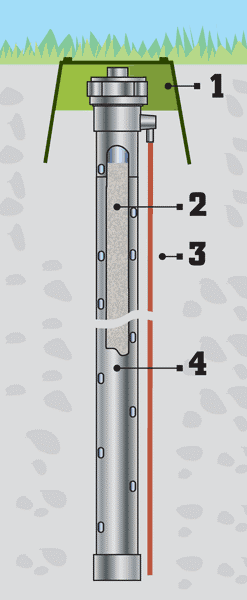
1. Maintenance pit
2. Special mixture of mineral salts
3. Near-electrode filler
4. Ground electrode
The main element of electrolytic grounding - hollow electrode (tube) with perforation holes along the entire length, filled with a special mixture of mineral salts. This mixture absorbs water from the environment, becoming an electrolyte (being leached) then penetrates into the ground, increasing its electrical conductivity (lowering its resistivity) and decreasing its freezing (lowering the freezing point). The exchange of liquids is carried out through the perforated surface of the electrode.
Traditional methods, described on a individual page are then for the basis of electrolytic grounding electrode: "Earth bonding in the permafrost".
Application features (talik formation)
.png)
Due to the reduction of soil freezing temperature, a talik area is formed around the electrode, it may be dangerous to the basement of a nearby building or pavement. Talik area on the ground surface presents itself a circle around the electrode with a radius equal to the depth of the electrode.
It is necessary to take this feature into account when performing project works and distance the electrodes from objects that could be damaged.
Maintenance of electrolytic grounding
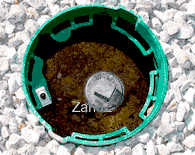
Electrode maintenance is very simple. It requires periodic (every few years) opening of the electrode cover and visual inspection of the volume of salt mixture inside it. When the mixture is completely transformed into the electrolyte, the electrode is filled with: a new volume of salt put into it.
Nothing else is needed. Electrode filling is enough for a minimum service life - 10 years (on the average - 15 years). Therefore, the first inspection is not recommended before this date.
Components

Ground electrode 1 piece
Stainless steel pipe perforated along its length. To connect to the grounding conductor a copper cable S> = 70 mm² or a strip of stainless steel S> = 90 mm², connected to the pipe is used. Electrode length = 3 m.
Electrode already It is filled with a special mixture of mineral salts.
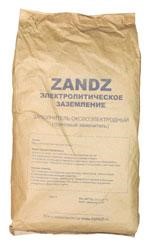 Near-electrode filler 3 bags
Near-electrode filler 3 bags
Soil substitute made of a mixture of graphite chips with a special kind of clay mineral is designed to increase the area of electrical contact of the electrode with soil, as well as to ensure the uniformity of the leaching process.
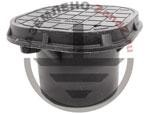 Maintenance pit 1 piece
Maintenance pit 1 piece
A plastic pit is designed for installation above the vertical part of the electrode (diving depth less than 50 cm).
Facilitates electrode maintenance, measuring of its parameters.
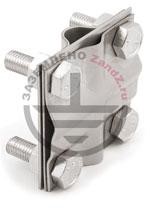 Clip for conductor connection 1 piece(Completed only when using an electrode with a copper rope)
Clip for conductor connection 1 piece(Completed only when using an electrode with a copper rope)
Stainless steel profiled clamp with M10 bolts. It allows you to connect the copper cable from the electrode to the grounding conductor - with a round wire or a strip (40 mm wide).
Safe use of steel and galvanized wire is possible - for that purpose, a gasket is put inside the clamp, which prevents formation of galvanochemical connection between the steel / zinc and copper.
To prevent loosening of threaded joints "bolt-nut" spring washers are used ( Grover washers / grover washers) installed between the clamping surface and the nut.
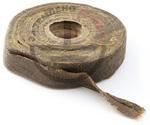 Waterproof tape 1 piece(Completed only when using an electrode with a copper rope)
Waterproof tape 1 piece(Completed only when using an electrode with a copper rope)
The band is used to secure the connection (clip) from soil and electrochemical corrosion By means of complete dewatering (demoisturing) from the connection point, without which the corrosion process is impossible. This band does not lose its physical and mechanical qualities for many years.
Made of non-woven synthetic fiber material, impregnated and coated with neutral composition based on a saturated oil hydrocarbon (petrolatum) and an inert silicon - containing filler. It remains soft under the influence of a wide range of temperatures. It does not harden or crack. Highly resistant to mineral acids, alkalis, salts and microorganisms highly-hermetical against water, steam and gas.
These pictures of products may differ from the real ones.
ZZ-100-102MВ weight and packing kit
Weight of the complete kit is 115 kg.
Packed into three pieces packages:
- electrode 0.1 * 0.1 * 3 (H * W * H, m), weighing 20 kg
- Filler in bags of 0.6 * 0.4 * 0.2 (H * W * D, m) weight of 30 kg
- A pit, a clip and a tape in a wooden frame or box 0.6 * 0.4 * 0.4 (H * W * H, m), weighing 3 + - 1 kg
Certificate
Certificate of Conformity РОСС RU.AГ66.Н00867 (voluntary certification):
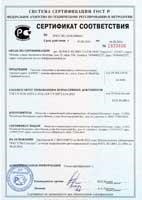
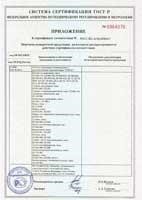
ZANDZ. Certification in the territory of the EEU Customs Union
Certificate of compliance RU C-RU.АЛ32.В.05536 for the correspondence of kits to the requirements of the Technical Regulations of the Customs Union TR CU 004/2011 "About security of low voltage equipment":
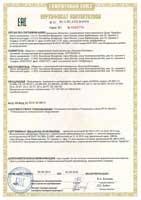
Exemption letter about a lack of needed mandatory certification of components in the territory of the Customs Union:
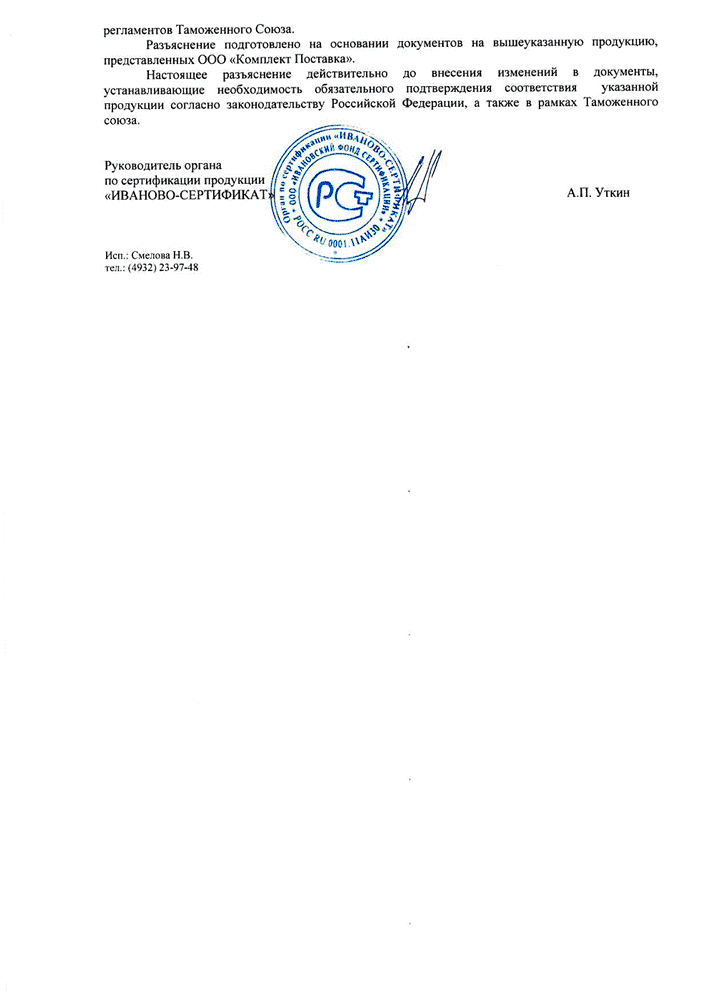
ZANDZ electrolytic grounding. Mineral salts mixture.
Expert opinion about correspondence to the Uniform sanitary-epidemiological and hygienic requirements
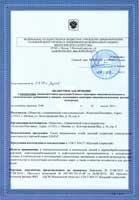
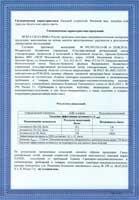
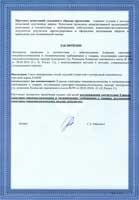
ZANDZ electrolytic grounding. Near-electrode filler.
Expert opinion about correspondence to the Uniform sanitary-epidemiological and hygienic requirements
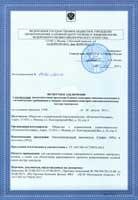
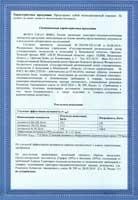
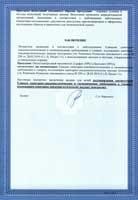
ZANDZ inspection pits. Voluntary certification
Certificate of Conformity РОСС RU.AВ66.Н00867 (voluntary certification):
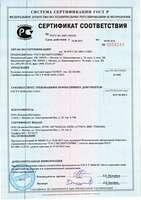
Related Articles:
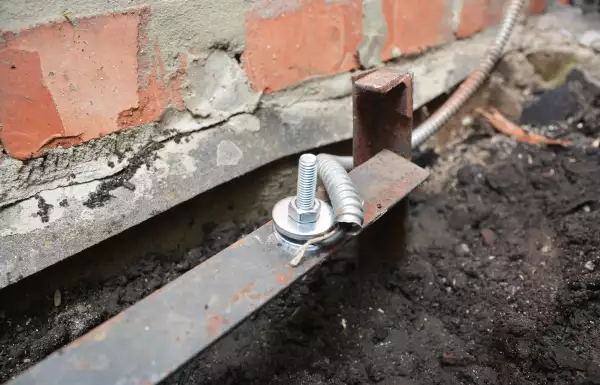 Why Cannot Vertical Earthing Devices Be Installed Close to Each Other?
Why Cannot Vertical Earthing Devices Be Installed Close to Each Other?

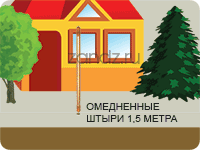 Modular grounding
Modular grounding
 Electrolytic Grounding in Permafrost Soils: Should Vertical of Horizontal Electrodes Be Used?
Electrolytic Grounding in Permafrost Soils: Should Vertical of Horizontal Electrodes Be Used?

